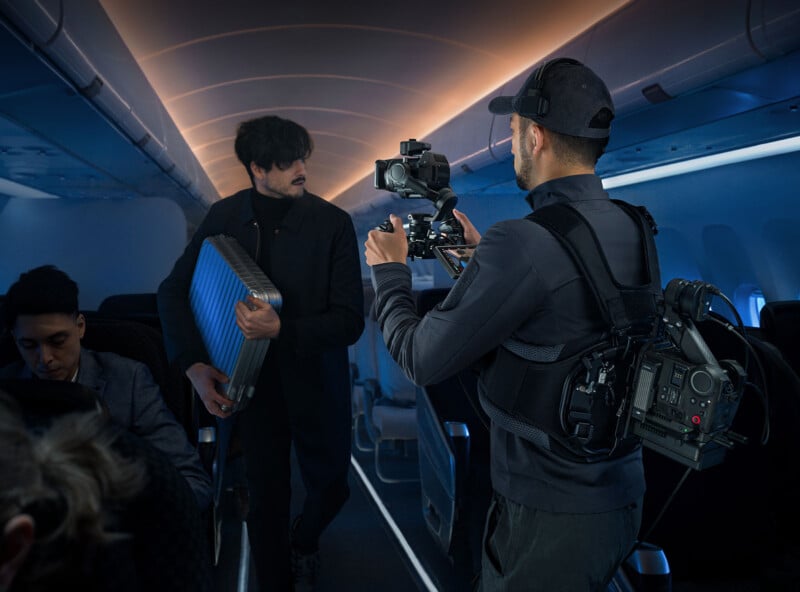The DJI Ronin 4D Flex Lets You Detach the Head from the Ronin 4D Camera
![]()
If there is one thing that can be said about DJI’s cinema camera endeavors, it’s that they are unique. The Ronin 4D was already a major shift from traditional systems, and now the Ronin 4D Flex is yet another play on the design.
The DJI Ronin 4D is a strange and somewhat bizarre-looking cinema camera whose looks belie its incredible versatility. The Ronin 4D combines a camera and a gimbal into one package, therefore allowing for a lighter weight and better-balanced camera system that also has improved stabilization and control. As strange as it looks, it works very well.
A More Flexible Ronin 4D
Building on that concept, DJI’s 4D Flex is a rather unassuming set of cables and plates that allows filmmakers to separate the Zenmuse X9 gimbal camera from the main body of the 4D system which DJI says reduces handheld weight and size to achieve professional footage with even more flexible camera movement.
“Connecting Ronin 4D Flex to the main body is a 2m ultra-thin coaxial cable, supporting lossless transmission of up to 8K. This allows high-speed signals from the camera sensor to reach the main body instantly, and also control and monitoring signals to be delivered in real-time,” DJI explains.
“This solid cable connection lends 4D Flex unprecedented flexibility of camera positions, no matter how limited the space. It also allows the Zenmuse X9 gimbal camera to be used as an ultra-small cinematic-grade remote head.”

The main camera body is still necessary in order to use the Zenmuse X9 to its fullest as part of the Ronin 4D system, but the lightweight cables allow everything to be separated so that the distribution of weight is easier to manage for a single operator. Basically, DJI figured (correctly) that it is much easier for a camera person to hold just the camera module at arm’s length instead of the entire system. The 4D Flex also allows the camera to be positioned more easily into tight spaces and operated at unusual angles.
![]()
![]()
By separating the head, the system’s handheld weight is reduced to about 3.9 pounds, which is a significant reduction from the more than 10 pounds the full system usually weighs.
DJI adds that the 4D Flex also makes the X9 gimbal camera compatible with a variety of rigs and lets professional crews shoot footage that was previously extremely difficult or even impossible. Namely, the company notes the capability to capture cinema quality through shots and dynamic camera interiors.
![]()
The 4D Flex is compatible with all of DJI’s Ronin accessories including hand grips, LiDAR focusing, monitors, and more.
DJI’s First-Ever Cinema Zoom Lens, Too
In addition to the 4D Flex, DJI also announced the DL PZ 17-28mm T3.0, the company’s first cinema zoom lens. Constructed of aluminum magnesium alloy, DJI says that the DL PZ 17-28mm T3.0 Lens weighs approximately 520 grams which provides a size-to-weight ratio that the company says is a perfect match for the X9 gimbal camera.
The internal servo zoom motor delivers what DJI promises is a smooth and reliable zoom that eliminates the need for an external focus motor or lens calibration. Additionally, the DL PZ 17-28mm adjusts zoom without requiring re-balancing.
![]()
DJI adds that thanks to precise back focus control and native system calibration, the autofocus, manual focus, and automated manual focus (AMF) are all “more outstandingly accurate.” When attached to the Zenmuse X9, the new lens promises ultra-high resolution from the center to the corners and has a minimum object distance of 0.19 meters (about 7.48 inches).
Pricing and Availability
The Ronin 4D Flex is available starting today for $929 — keep in mind, a Ronin 4D is still required to start using the Flex. The DL PZ 17-28mm T3.0 lens is available for $1,339.
Image credits: DJI